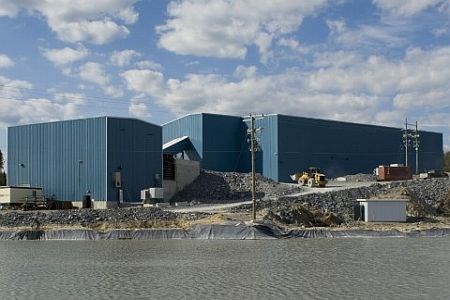As the price of nickel slowly continues to edge upwards, so too are the fortunes of Liberty Mines Inc.
Officials are once again working to bring the Timmins-area mines back into production.
"The nickel price has got to the range where we can make some significant money, though it's going to take three months to get the rest of the development done," says Gary Nash, president and CEO, Liberty Mines.
"You're either in business or you're not, so you can't hide behind the rock forever, and basically, this works for us. We can keep our costs in a very respectable area, watch things carefully, and we'll be okay."
Development work has already begun at the McWatters Mine, where mining costs range between $3.00 and $3.50 per pound of nickel. This immediately creates 30 jobs, a total that will rise to 80 as various projects come online.
Grades at the mine average at one per cent overall, though values rise as the work goes deeper. From the 140-metre level, grades have a weighted average of nearly 2.5 per cent.
Blasthole stoping will largely be used to mine at McWatters, though cut-and-fill methods will be used to reach the 150-metre level.
"It's as cheap as you can get," says Nash.
Work had already begun at the site prior to the operation's shutdown in October 2008, with the ramp having reached the 100-metre level. This will be completed to the 140-metre level, along with the drift and the ventilation raise.
Costs for this work will reach $4.5 million, and Nash says a small round of financing will be completed in the near future to help facilitate it.
Beginning as a 500-tonne-per-day operation in November, McWatters will scale up to a 1,600-1,800 operation by February 2009.
"It's going to be very, very welcome to have some cash come back in November, that's for darn sure."
Also receiving a similar treatment is the Hart property, which stands as another potential low-cost operation.
A mining plan for the property is due to be completed by November 2009, with construction and development due to begin in the spring.
Mining will begin by the early fall at up to 700-tonnes-per day; that number may grow once the 200-metre level is reached, where grades of 1.5 per cent and above are located.
Both the Hart and McWatters mines are due to come online long before Liberty's former-producing Redstone Mine, which turned out 103,570 tonnes between May 2007 and its shutdown in October 2008.
The cost per tonne of nickel at Redstone sits "at best" at $5.50 per pound, making the project less economical at current nickel prices. However, the project is expected to become more economically viable as the price of nickel rises.
A closer, more thorough look will be taken at Redstone in 2010 once the Hart Mine is fully operational.
Though Redstone has a resource of 315,000 tonnes at an average grade of two per cent, not all of it can be mined without the proper material to ensure the stability of the rock structure.
To that end, company officials are considering the construction of a paste plant on site. Mine tailings would be mixed with sand and cement as a sort of weak concrete, which is then pumped into the stopes. This would also reduce the need for a larger tailings facility, "killing two birds with one stone."
Construction costs for this type facility typically range from several hundred thousand dollars to a few million, though Liberty's plant will likely cost $500,000.
Some of this work is being made possible through the company's new owners.
With debt financing falling through, a loan coming due in October and a variety of expenses, Liberty Mines arranged a $30-million financing with China's Jilin Jien Nickel Industry Company Ltd. in April 2009. The move gave Jilin Jien a 51 per cent stake in Liberty.
The spectre of foreign ownership fails to faze Nash, who says Jilin Jien deserves a lot of credit and respect for stepping in where others would not.
"There were 14 Canadian companies sitting in the woodworks, just waiting to take a piece of Liberty apart in receivership," says Nash. "Rather than step up to the plate and work with us to solve our problem, they just stood there like vultures. Everybody says, 'Now you have a foreign country that owns half your company,' but half of everything is better than 100 per cent of nothing."
www.libertymines.com




